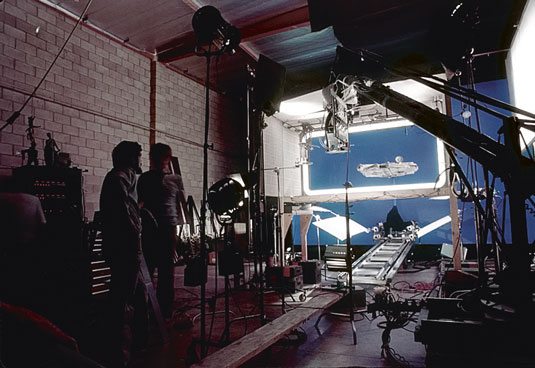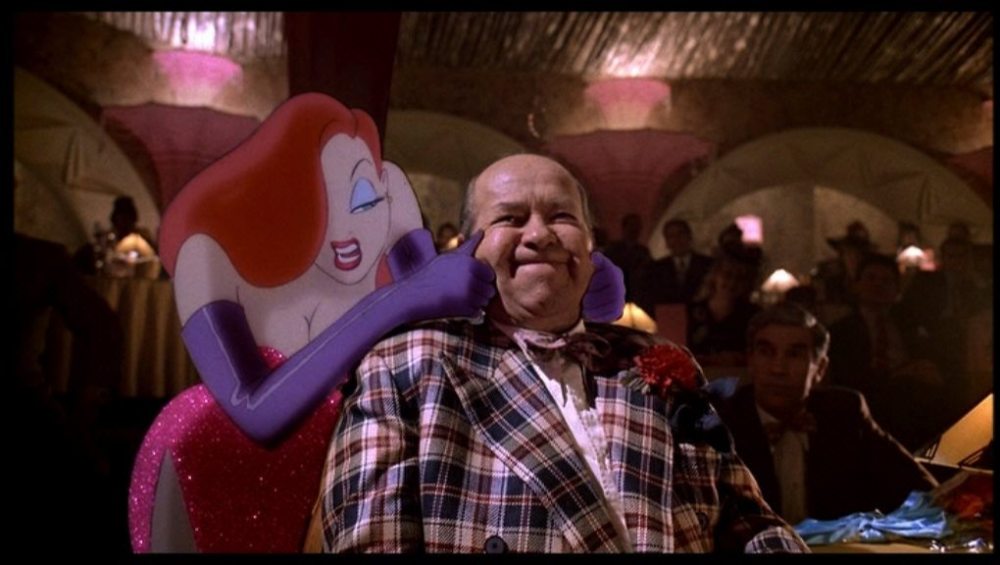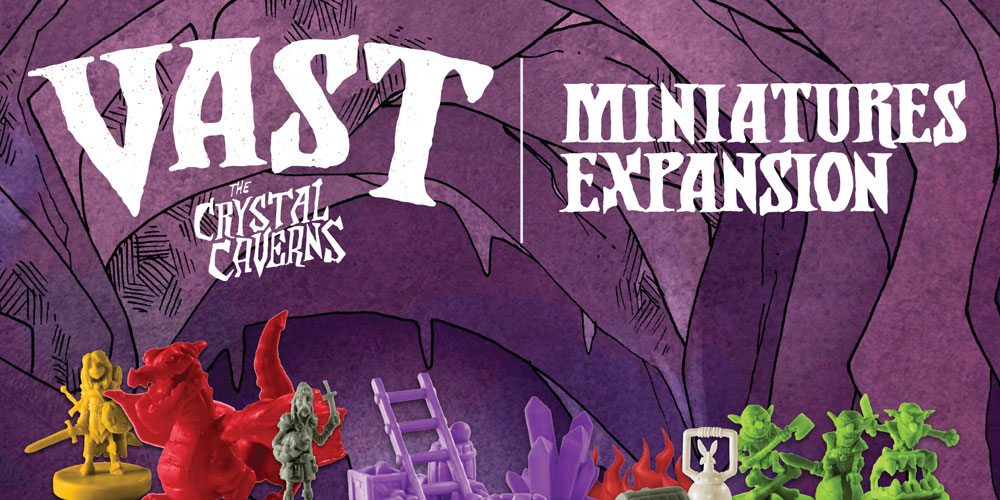When production first began on Star Wars in the spring of 1975, George Lucas wanted to create something the likes of which audiences had never seen. His desire to transport his audience across galaxies led to the creation of what soon became the most visionary and groundbreaking special effects company on earth; Industrial Light & Magic, or ILM. As ILM celebrates its 40th year of movie magic, here is a peek behind the curtain at four of the most important effects and innovations the company has produced.
Star Wars and the Dykstraflex
As Lucas began production on Star Wars in 1975, he assembled the original and now legendary ILM team alongside effects artist John Dykstra. That team, which included VFX masters Ken Ralston, Richard Edlund, Dennis Muren, Joe Johnston, Phil Tippett, Steve Gawley, Lorne Peterson, and Paul Huston, changed the way miniature effects were filmed by combining an abandoned film innovation with a new form of motion technology. In the 1950s, VistaVision was created as a higher definition, widescreen format for traditional 35mm film. Like other wide-format film experiments of the 1950s such as Cinerama and CinemaScope, VistaVision was a Hollywood gimmick meant to transform the moviegoing experience into a bigger, more exciting spectacle. The trend eventually subsided until Dykstra and ILM revived it some twenty years later with an entirely new application.
Combining the obsolete VistaVision cameras with new digital controls, the ILM team created the Dykstraflex (named after Dykstra), the first motion-controlled camera. The Dykstraflex allowed filmmakers to add more complexity and scale into their miniatures shots, providing Lucas with new versatility, control and predictability in effects framing and blocking. This newfound freedom enabled ILM to create the most incredible, timeless space battles ever put to film, ushering in a new era of VFX action and wonder.
Young Sherlock Holmes and the CG Knight
While 1985’s Young Sherlock Holmes may not be as well-known as big VFX epics like Star Wars or Terminator, it still contains one of the most game-changing effects sequences in history. The need to create a realistic, actionable, stained glass knight for the film challenged ILM to design cinema’s first computer-generated, photorealistic character. With CGI dominating the bulk of special effects nowadays, it’s clear why the stained glass knight was such a groundbreaking creation.
One could also argue that the effect was the first step towards Hollywood’s current over-reliance on CGI. I’m less pessimistic, especially when considering which ILM artist was responsible for the effects creation. That person was John Lasseter, the visionary animator once fired from Disney for encouraging the company to move towards computer animation. Ironically, Lasseter is now the CCO of Pixar and Walt Disney Animation, and one of the most skilled creators of emotively realistic animation the world has ever seen.
Using Optical Composting to Frame Roger Rabbit
With 1988’s Who Framed Roger Rabbit, ILM set out to blend the two worlds of animation and live action in ways far beyond what Disney accomplished with Mary Poppins in 1964. Who Framed Roger Rabbit was a marvel in optical compositing. Adding hand-drawn animation cels into live-action sequences with fine, artistic details, ILM’s artists seemed to magically blur the mind’s perceptions of depth, light, and tangibility by seamlessly translating the film’s effects for the unconscious observations of its audience. The detail that went into making these shots work is a testament to ILM’s dedication to bridge the gap between reality and illusion.
Digital Dino DNA on Jurassic Park
ILM created computer generated characters, found new ways to blend animation and live action, and in 1993, for the first time ever, used digital technology to create a complete, living, breathing creature for Jurassic Park. Alongside animatronic dinosaurs created by Stan Winston and go-motion dinos from ILM’s Phil Tippet, the company created full digital dinosaurs the likes of which the world had never seen. What ILM achieved with optical compositing on Roger Rabbit they achieved tenfold using digital compositing technology on Jurassic Park. As King Kong terrified audiences with its stop-motion dinos in 1933, Jurassic Park terrified and awe-inspired with ILM’s digital creations in 1993. The company had achieved their biggest magic trick to date: bringing back the dinosaurs.
For 40 years each of these innovations has built on the last, expanding the ways that movies transport audiences across space and time. What is your single favorite Industrial Light & Magic effect?








Though arguably the worst of the saga, the pod race in Star Wars: The Phantom Menace is one of my favourite scenes to watch over and over. I could see it another 100 times and never get tired of it.